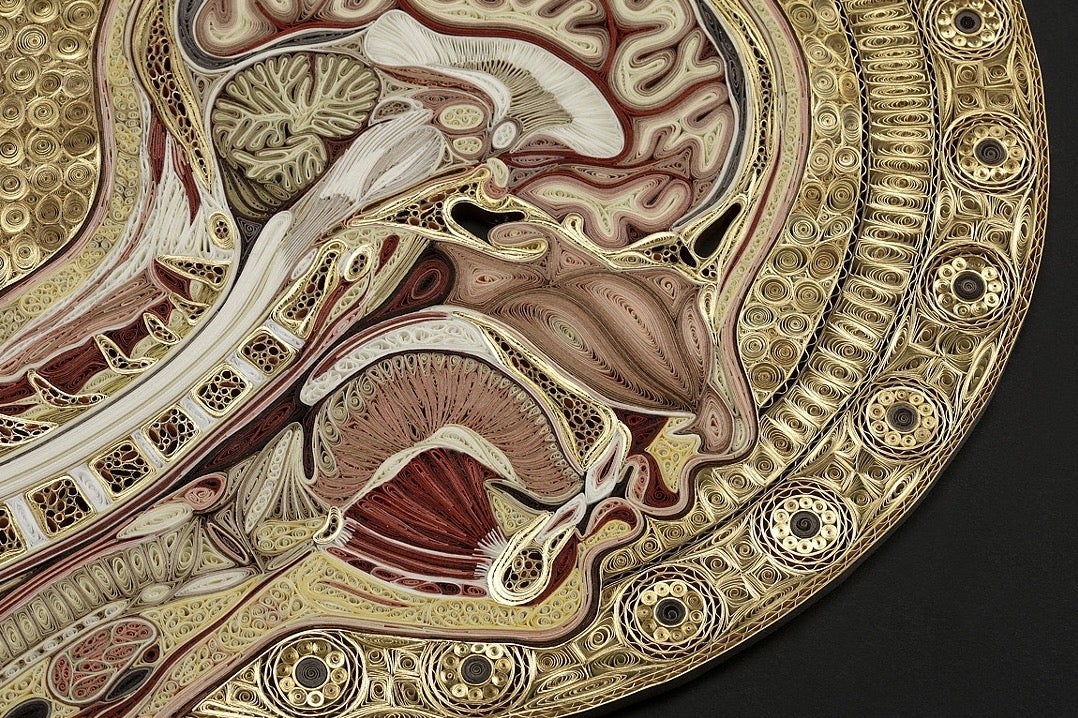These visceral anatomy cross-sections are made entirely out of old books
Artist finds the technique 'exquisitely satisfying'

“These pieces are made of Japanese mulberry paper and the gilded edges of old books,” artist Lisa Nilsson explains.
“They are constructed by a technique of rolling and shaping narrow strips of paper called quilling or paper filigree.
“Quilling was first practiced by Renaissance nuns and monks who are said to have made artistic use of the gilded edges of worn out bibles, and later by 18th century ladies who made artistic use of lots of free time.”
Nilsson’s ‘Tissue Series is stunningly detailed and well-executed, consisting of simultaneously grotesque and pleasing cross-sections of brains, abdomens, torsos and more.
“I find quilling exquisitely satisfying for rendering the densely squished and lovely internal landscape of the human body in cross section,” Nilsson explained.
Tricky though they must be to produce, Nilsson likes to ensure her creations are anatomically accurate.
“The peach-colored shape located where the brain meets the sinuses is the olfactory bulb,” she said of the Canis lupus familiaris (dog).
“This structure is forty times bigger in dogs than in us and enables dogs to sense smell to a degree one hundred thousand to one million times greater than humans.”
You can see more of her amazing work here.
Subscribe to Independent Premium to bookmark this article
Want to bookmark your favourite articles and stories to read or reference later? Start your Independent Premium subscription today.

Join our commenting forum
Join thought-provoking conversations, follow other Independent readers and see their replies